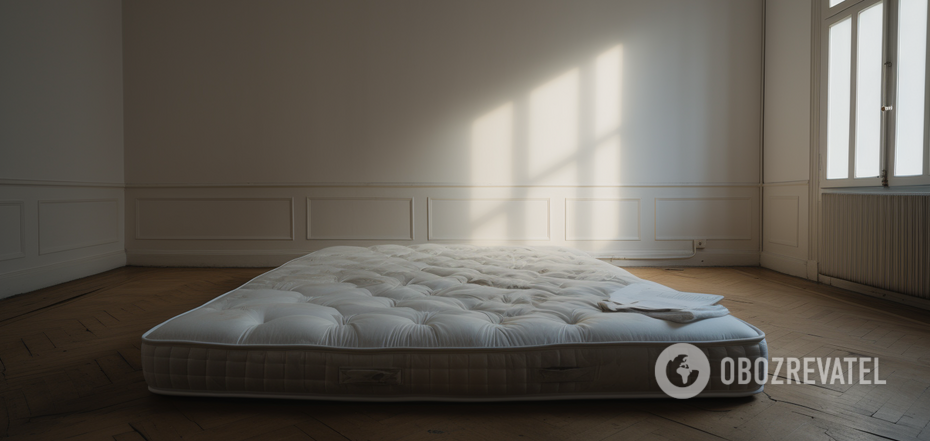Life
How often do you need to clean your mattress and what to do if it gets moldy
No matter how expensive and high-tech your mattress is, you still run the risk of encountering a problem like mold in it. Due to its porous structure, it can accumulate moisture, which mold spores will feel great in. But don't be in a hurry to throw away the item as soon as you notice the first signs of mold. Sometimes the situation can be remedied.
OBOZREVATEL has collected several options for how to clean a mattress from mold. As well as recommendations on how to properly care for it.
Why mold on a mattress is dangerous
Mold spots form when microscopic fungi begin to multiply on an object. They reproduce by spores and, under favorable conditions, do so very quickly. Moreover, they can spread to bedding, carpets, furniture, walls, and other surfaces in the bedroom.
Mold spores cause rhinitis, allergic reactions, headaches, and other negative symptoms. Therefore, you need to get rid of the problem as soon as possible.
How to tell if your mattress has mold
Mold developing under a mattress is more likely to be a problem for people who place it directly on the floor rather than on a base or platform. But even if the item is installed correctly, there is still a risk of mold.
It is important to correctly identify the moment when the problem appears. After all, it depends on your promptness whether you can save the mattress. Here are the main signs that dangerous microorganisms may be developing in it:
- whitish, pinkish, or fluffy dark gray spots appear on the mattress;
- the mattress has a musty odor;
- you periodically find new spots of unknown origin;
- you have seen mold in other parts of your bedroom.
If the marks on the surface of the mattress are purple, brown, or green, it's likely that you won't be able to save it. These are signs that the problem is already old.
How to prevent mold on your mattress
Good mattress hygiene is the best way to prevent mold growth. This means that it will have to be cleaned in the right way and with the right frequency. It will also be helpful to purchase a mattress cover that can be washed regularly.
Vacuum your mattress monthly to get rid of dust mites and allergens, as well as dead skin and hair. They are good food for the development of microorganisms.
Clean up spills immediately after they hit the mattress - don't let them soak in. It is in a humid environment that molds develop.
Remove stains as soon as you notice them. You can use baking soda or hydrogen peroxide. But read the instructions for your mattress first.
From time to time, sunbathe the mattress in direct sunlight. Ultraviolet light kills bacteria and fungal spores. But keep in mind that this can cause the mattress cover to fade.
Deep clean your mattress at least twice a year. If you have high humidity in your home, you will have to repeat the procedure once a month.
How to remove mold from a mattress
In fact, mold penetrates the mattress very quickly and makes it unusable. But if you think that the fungus hasn't had time to grow deeply yet, you can try to save the thing. To do this, you will need medical alcohol and hydrogen peroxide.
Start by vacuuming the mattress well from all sides. Then mix alcohol and water in equal proportions or dissolve one part of peroxide in three parts of water. It is better to apply the alcohol solution with a napkin, and the peroxide will be more effective if you combine it with brushing. Wipe the stains until all visible traces of mold are removed, then rinse the treated area thoroughly, avoiding overwatering, and dry the mattress well under the sun before using it again for its intended purpose.
Earlier, OBOZREVATEL told you how to clean a suede sofa yourself.
Subscribe to OBOZREVATEL's Telegram and Viber channels to keep up with the latest developments.



























